- Jesus can’t predict the future
- mention of ‘current events’
- not that late compared to others
- early dating of Acts
- early dating of Mark
- death of the Apostles
- mention from Church Fathers
- lack important mentions
- Paul quote Luke
General dating
Jesus of Nazareth died in 33 CE. Scholars don’t have an exact consensus about the time when the Gospels were written. But they all agree that they come within the 1st century CE, around the time where the 1st generation of Christian died.
| Author | Early | Late |
| Matthew | 60s | 80s |
| Mark | 50s* | 66-70s |
| Luke | 60s | 80s |
| John | 90s | 90s-100 |
| Acts of the Apostles | 62 | 80-90s |
* most information comes from John Wenham’s “Redating Matthew, Mark and Luke: a fresh assault on the Synoptic problem” in 1992
Is it that late?
At first impression, forty to sixty years sounds far away to have preserved accurate and reliable information about Jesus. Especially when it contains supernatural events (e.g. miracles, resurrection, etc.) But we have to put that into context.
Ancient bios

The lapse of time between the death of Jesus and the Gospel of Mark (1st book) is comparable to other ancient biographies (or even better):
- Socrates
(470-399 BCE)don’t even have one formal biography - Abraham Lincoln‘s first biography1 (1890) is around 25 years away from his death (1865)
| Subject | Author(s) | Lapse of time |
| Plotinus | Porphyry | ~ 30 years 2 |
| Otho | Tacitus | ~ 30 years |
| Tiberius | Suetonius | ~ 84 years |
| Apollonius of Tyana | Philostratus | ~ 130 years |
| Alexander the Great | Arrian & Plutarch | ~ 400 years |
| Buddha | Asvaghosa | ~ 400 years |
Sources (pre-Markan passion source, M, L, Q, sign source, discourse source) existed before the composition of the Gospels (either written or oral memorization), which we no longer possess.
Why waiting so long to start writing?
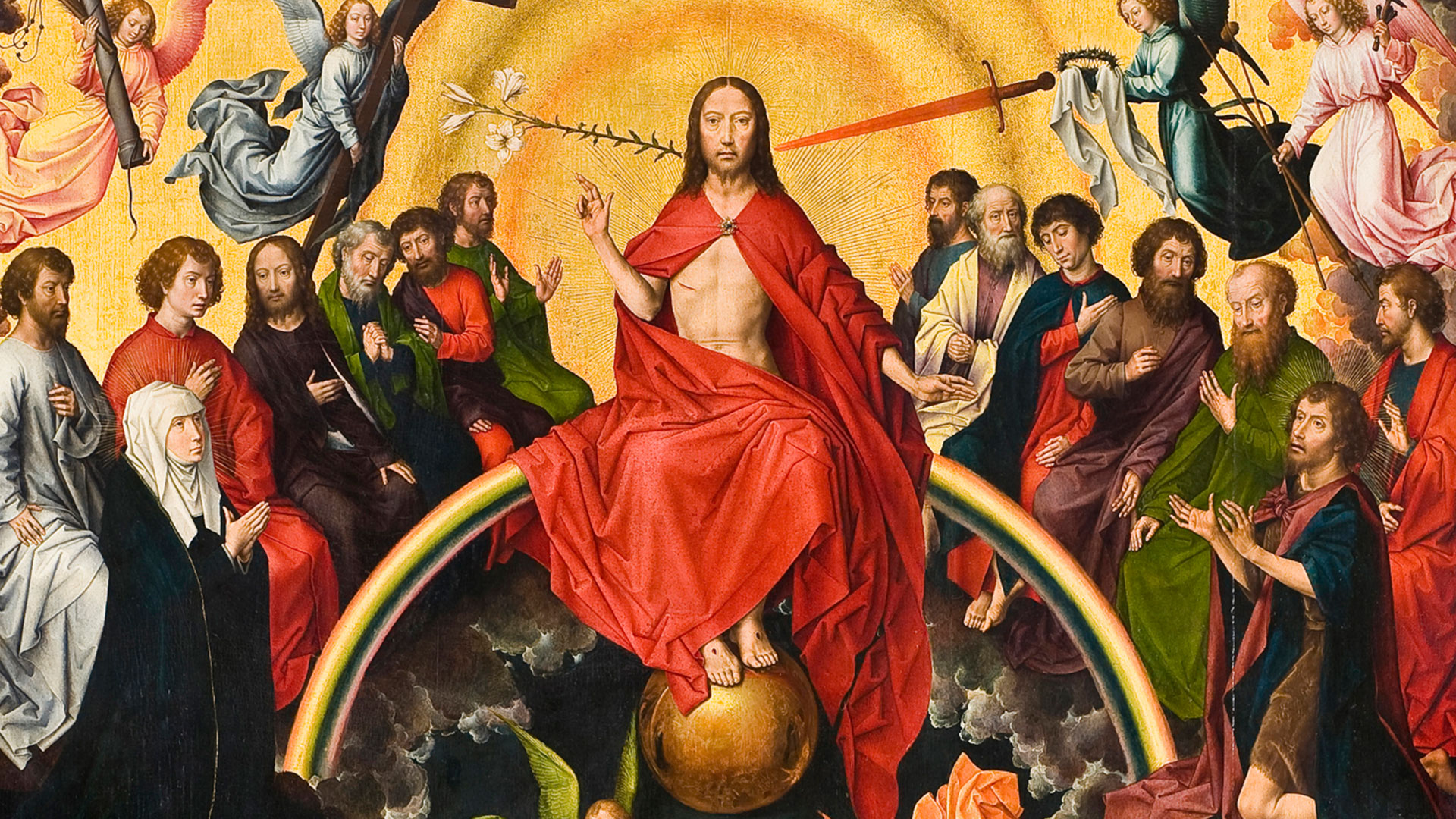
Even by the 50s CE, Paul barely have any biographical details about Jesus in his letters.
Second, as long as the first generation of eyewitnesses were still alive to tell the stories orally to the assemblies, it wasn’t necessary to record them on paper when the vast majority of the population were illiterate. Preserving a book was expansive (the early Church was poor, and couldn’t afford to have libraries like the rich people5).
But because Jesus didn’t come back as they expected (we find less and less apocalyptic material as times goes on6), it was urgent to preserve a written record of the life of Christ either before they die out7 or to keep the traditions in a written form as close to the events as possible (to avoid shortage of memory).
History of the Jesus traditions
Early Christians were so preoccupied with Jesus’ return that they pay less attention to smaller details. As the hope fades out, people gradually want to know more about Him8.
Today, the standard order is that Mark came first, Matthew and Luke relied on Mark as a draft, and John wrote independently. It is known as the “two-sources hypothesis“. Acts is also the sequel of Luke’s Gospel.

Mark is believed to be our 1st Gospel for several reasons9:
- more than 90% of Mark’s content is found in both Matthew & Luke
- 607 verses appears in Matthew
- 350 verses appears in Luke
- he lacks the Q materials (ex: Lord’s Prayer, Beatitudes, parables10, etc.)
- he has the highest incidence of Aramaic words
- his Greek is less refined, Matthew & Luke are more polished
- shortest Gospel (we can imagine he finish this in a rush to publish it quickly11)
- contain difficult readings that Matthew & Luke clear up
- most neglected Gospel to be commented by the Church Fathers12
Because a lot of eyewitnesses heard the teachings of Jesus themselves, many traditions (e.g. M, L, Q) were able to be preserved independently from the apostolic kerygmatic formula (see table below). Matthew & Luke would later include those content in their Gospels.
| 1 Corinthians 15 (33-35) | Acts 10 (37-40) | Mark (66-70) | Matthew & Luke (80s) |
| - | - | - | (Mt 1-2 / Lk 1-2) Birth narrative |
| - | (36) Jesus Christ who is Lord of all, | (1:1) The beginning of the gospel of Jesus Christ the Son of God | (Mt 3-4:11 / Lk 3:4-13) The beginning of the gospel of Jesus Christ the Son of God |
| - | (37) what has happened all over Judea, beginning in Galilee after the baptism that John preached | (1:14-15) Jesus’ ministry begins after his baptism by John | (Mt 4:12 / Lk 4:14) Jesus’ ministry in Galilee begins after his baptism by John |
| - | (38) how God anointed Jesus of Nazareth with the Holy Spirit and power. He went about doing good and healing all those oppressed by the devil, for God was with him. | (1:9-11) Jesus is baptized and receives the Holy Spirit / (1:16-10:52) Ministry of healing & exorcism | (Mt 3:1-4:11 / Lk 3:1-4:13) Jesus is baptized and receives the Holy Spirit / (Mt 4:12-20:34 / Lk 4:14-19:27) Ministry of healing & exorcism |
| (3) Christ died for our sins according to Scriptures | (39) We are witnesses of all that he did both in the country of the Jews and (in) Jerusalem. They put him to death by hanging him on a tree / (43) To him all the prophets bear witness, that everyone who believes in him will receive forgiveness of sins though his name. | (11-15) The Apostles accompany Jesus until his death by crucifixion in Jerusalem | (Mt 21-27:66 / Lk 19:28-23:56) The Apostles accompany Jesus until his death by crucifixion in Jerusalem |
| (4) he was raised on the third day | (40) This man God raised (on) the third day and granted that he be visible | (16:1-6) Resurrection of Jesus on the first day of the week | (Mt 28:1-15 / Lk 24:1-11) Resurrection of Jesus on the first day of the week |
| (5) he appeared to Cephas, then to the Twelve | (41) not to all the people, but to us, the witness chosen by God in advance | (16:7-8) Resurrection appearances | (Mt 28:16-20 / Lk 24:12-53) Resurrection appearances |
How do we know if those traditions weren’t corrupted? It’s because some Jesus traditions parallel what Paul wrote in his letters16.
| Paul | Synoptic tradition |
| Rom 1:16 | Mk 8:38/Lk 9:26 |
| Rom 2:1/14:10 | Lk 6:37/Mt 7:1-2 |
| Rom 12:14 | Lk 6:27-28/Mt 5:44 |
| Rom 12:17/1 Thess 5:15 | Mt 5:39/Lk 6:29 |
| Rom 12:18 | Mk 9:50 |
| Rom 13:7 | Mk 12:17 |
| Rom 13:9 | Mk 12:31 |
| Rom 14:13 | Mk 9:42 |
| Rom 14:14 | Mk 7:15 |
| 1 Cor 2:7 | Mt 13:35 |
| 1 Cor 13:2 | Mt 17:20 |
| 1 Thess 5:2, 4 | Mt 24:43/Lk 12:39 |
| 1 Thess 5:13 | Mk 9:50 |
Many false Messiah lost their followers after they die. But, after witnessing Jesus risen from the grave, primitive Christianity started with a Jesus who was God made flesh, who did miracles and resurrected from the dead (Acts 2:22-40). Details were added later as people wanted to know more about Jesus17.
Two best options
Scholars can argue by two ways:
1
Mark in 65-70 CE, and we add ten to fifteen years18 for Matthew & Luke (enough time to produce a copy of Mark’s Gospel, deliver them in the hands of the Evangelists, collect traditions, writing down, and make additional copies for distribution)
2
Acts is finished by 62 CE, thus making the Synoptics down to 50s-60s CE (Luke’s Gospel is the 1st volume of the 2, and he rely on Mark, so Mark must be even earlier)
Early dating
In the ancient time, it was assumed that the Synoptics were written before 70 CE, based on the writing of the Church Fathers. Modern scholarship however, disagree (except for Mark).
Acts must be written in 62 CE (Paul didn’t die yet when it was completed). If Acts is the sequel of Luke’s Gospel, then the Gospel must be earlier. And if Luke depends on Mark’s Gospel, then Mark must be dated even earlier. All the three Synoptics failed to mention post-70 events (destruction of the Temple of Jerusalem, first Jewish-Roman war), as well as the death of the apostles (Peter, Paul, James) that are major details we should expect to be included.
Skeptics scholars believe that Mark wrote in 70 CE to reflect the ‘current event’ of the destruction of the Temple in Jerusalem. Matthew and Luke added more details, such as “surrounded by armies” (Lk 19:43, 21:20) and “burned” (Mt 22:7), which would conclude that they described what already happened in the past19.
But as C. H. Dodd argues, it would be a description of the first Temple during the Babylonian Empire (2 Kgs 25:8-10)20.
Gospel of Mark
Mark is debated between 45–50s CE and 66–70 CE.
Traditions tell us that Peter was the main source of information for Mark’s Gospel.
Traditions differ between the Church Fathers:
- 41 – 54: Eusebius
(265-339 CE) - pre-67
(before Peter’s death): Clement of Alexandria(150-215 CE) - 67-70
(soon after Peter’s death): Anti-Marcionite Prologue(150-255 CE), Irenaeus of Lyon21(130-202 CE)
“The Gospel of Mark could be written ‘any time between the 30s and 70 CE’.” 22
James G. Crossley (atheist)
66-70 CE
- traditions from the Church Fathers (Clement of Alexandria, Irenaeus23 & Anti-Marcionite Prologue)
- Mark’s emphasis on Jesus’ intense suffering may reflect the current persecution of Christians in Rome
24 - Mark 13 could speak of the persecution in Rome
(64-68 CE)25 or in Jerusalem(66-70 CE)- 13:14 speaks of the crisis of Caligula in 40 CE26 / parallel with Paul
(2 Thess 2:3-4)
- 13:14 speaks of the crisis of Caligula in 40 CE26 / parallel with Paul
- nearby the death of Peter (he kept a record of his teachings)
- Mark didn’t need to write down Peter’s testimony as long as he was still alive to tell them
- Mark has the best accurate descriptions about Jewish sects in the 30s CE27
- Matthew & Luke show a new Judaism dominated by Pharisaism (post-70 CE / Sadducee lost their roles)
- …
45-50s CE
…
Gospel of Matthew
80s CE
…
Gospel of Luke & Acts
Luke’s Gospel is debated between 60s and 80s CE.
He also wrote Acts (a sequel written in Rome28), which is debated between 62 and 90s CE. The transition between the Gospel and Acts is clear: description of the Ascension of Jesus (Lk 24:50-53, Acts 1:6-12), addressing to the same person (Lk 1:3, Acts 1:1).
Acts of the Apostles
At the earliest, Acts is believed to be finished by 62 CE29:
- no mention how Peter & Paul died
(64-67 CE) - no mention of the Great Fire of Rome (64 CE), first Roman-Jewish war (66 CE), destruction of the Temple (70 CE)
- no sign of hostility against Rome
- John does (90s CE)
- Luke defend Paul’s apostleship (including parallels with Peter32) against those who denied it33
(ca. 56 CE) - usage of the pronoun “we”34, indicating that he was a traveling companion to Paul
(2 Tim 4:11) - Luke died in 74 CE
(it’s possible someone else continue his work)
Primitive terms
Several of the expressions in Acts are early and primitive. The phrases “the Son of man”, “the Servant of God” (applied to Jesus), “the first day of the week” (the resurrection), and “the people” (the Jews) are all phrases that readers would understand without explanation prior to 70 CE. After 70, they would need to be explained. These phrases, therefore, indicate that Acts was intended for an audience that would remember these terms and their usage.
Why it was written in 80-90s CE then? Because if the consensus is right (Acts is the sequel), then it cannot be earlier than 80s CE if Luke wrote his Gospel in the 80s CE. Acts only cover the period of the Church between 33-62 CE.
Gospel of Luke
If Acts is the sequel, it follows that his first letter (Gospel) must come earlier.
If the Muratorian Fragment (170 CE) indicate that Luke is 3th in order (chapter 1), then it follows that the Gospel of Luke must be written between Matthew, Mark & Acts.
Paul in Rome
“Matthew also issued a written Gospel among the Hebrews in their own dialect, while Peter and Paul were preaching at Rome, and laying the foundations of the Church.” 35
Irenaeus of Lyon
Paul arrived in Rome in the year 60 CE36. Then he was put into prison for 2 years (Acts 28:30-31). That’s the end of the story. There is no mention of how he died between 64-67 CE37. If he’s the main hero of the story; it doesn’t make sense that Luke doesn’t talk about it. Unless it didn’t happen yet by the time he wrote.
John implicitly mention Nero (Rev 13:18) killing Peter (Jn 21:18), meaning that we know he wrote after 70 CE.
Romans
The Romans weren’t portrayed as evil in the Synoptics & Acts (quote here). It was only starting with John (90s CE) that we see a hatred against them because Nero persecuted the Church in 64 CE. He is even depicted as the Anti-Christ (quote here). This better make sense if they were written before 70 CE.
- Acts 21:28
- Acts 27:3
Peter & Paul died in Rome during the Great Fire around 64-67 AD. None of the 3 Gospels or Acts mention them. Probably because it didn’t happen yet when they publish their work. John indirectly mention Peter’s death38, so we now he wrote late.
Gospel of John
John’s Gospel is undisputedly the last Gospel (post-70 / 90s CE), both from the Church Fathers and history:
P52 is the earliest fragment we have (ca. 125-175 CE). Since it’s not the original copy (autograph), then the first version of John and the Synoptics must be dated earlier.
Raymond Brown argues that the Gospel of John has been developed in multiple stages, starting with the Beloved Disciple who was an eyewitness (Jn 19:26, 35) during Jesus’ ministry39 (Jn 21:24). It was the work of someone profoundly influenced by John the Baptist and the Essenes from Qumran40.The final stage could be done in the 90s CE, with additional details which reflects the ‘current’ situations.
Jesus’ ministry
(30-33 AD)
Johannine traditions
(33-90s AD)
Writing of John’s Gospel
(90s AD)
Primitive units
…
Signs of polemic
John display polemic material against some ‘current’ people of his time: ‘the Jews’ and the docetists.
The ‘Jews’
In 85 AD, Christians were expelled from the synagogues43 (Jn 9:22). That event created frustration and polemic against the ‘Jews’ (which aren’t the people, but some of the authoritative figures who refused to believe in Jesus).
The docetists
Ignatius of Antioch condemned these heretics in ca. 110 CE.
Docetism could have been started from a Jewish or Greek background:
- Jews: the idea of a crucified Son of God is unbearable, thus they want to avoid it
- Greeks: God who is all perfect cannot take flesh in this corrupted material world
It would have naturally rise at a period of time where the first eyewitnesses would have died out (no rivalry to confirm that Jesus was truly human).
It is believed that John’s Gospel was an attack against Cerinthus44:
- emphasis on Jesus’ Incarnation
- treat the docetists & gnostics as Anti-Christ in his letters
(1 Jn 4:1-6) - display anti-Rome atittude (post-64 AD) when he wrote the Apocalypse (Nero as the Anti-Christ)
- add more details omitted by the Synoptics
- awareness of Peter’s death
- reveal anonymous names preserved in the Synoptics (ex: Peter who cut the ear of the servant)
Ignatius draw materials from Matthew’s Gospel47.
Dating of Mark
Mark & Peter in Rome

Mark wrote during a time of Roman persecution (66-70 AD), and the focus of his Gospel is the Suffering Christ48. He encourages the Christians of Rome to keep the faith. We see a pattern of Jesus doing miracles and speaking a lot, and it get less as we read the Gospel, as if Jesus went into the depth of our suffering, to resurrect.
Eusebius tradition
Mark was following Paul during his first missionary journey (late 40s AD) and left half way (Acts 13:13). Based on later accounts, Peter went to Rome in 43 AD49 to deal against Simon Magus50. Philo of Alexandria was around51. Claudius deported them from the city for disturbance surrounding Jesus, around 49 AD52 (Acts 18:2). Christians later return back to Rome (Rom 16:3). Mark was Peter’s personal secretary53 (1 Peter 5:13). After his work is done, Mark was sent to Egypt54, to found the Coptic Church.
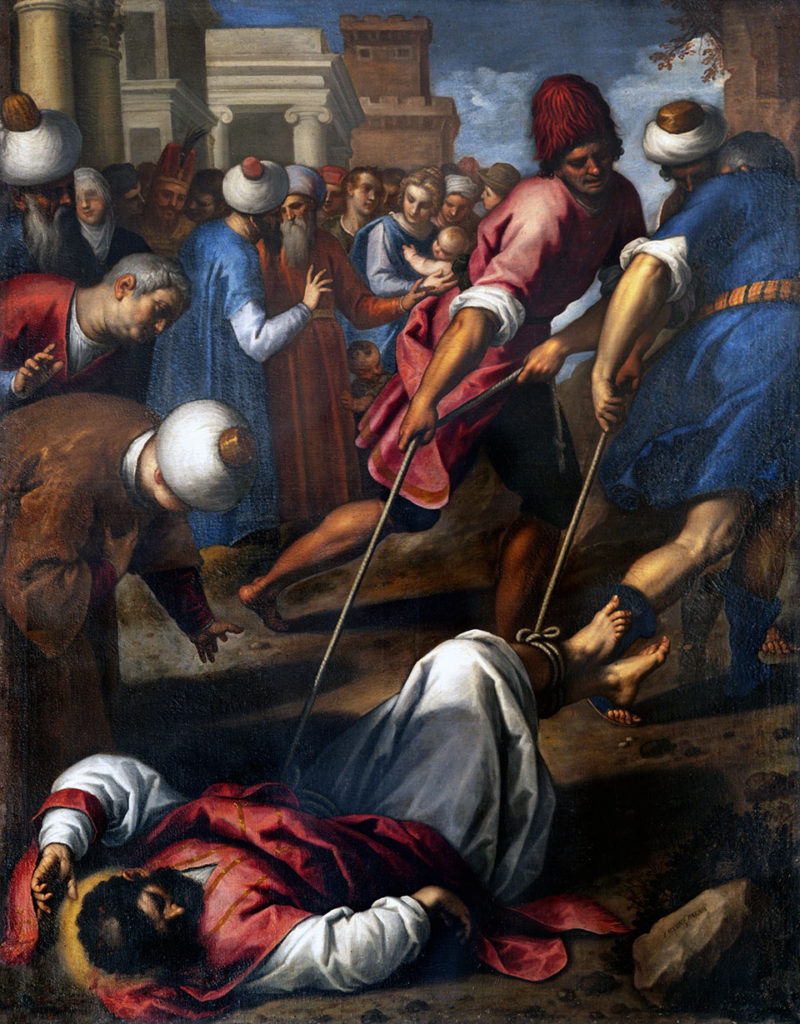
Death of Mark & Peter
“There is no material in Mark which must be dated after 70 AD.” 58
E.P. Sanders & Margaret Davies
Crossley argues that after 45 AD, Gentile & Jewish Christians didn’t observe some of the biblical law like the dietary restrictions and keeping the Sabbath. Mark takes Jesus’ observance of the law for granted and that this judgement could only be established during a period where the Christians largely follow the law.
Missing historical events
The Synoptics Gospels & Acts failed to mention four important events.
- Destruction of the Temple of Jerusalem (70 AD)
- First Jewish-Roman war (66 AD)
- Great Fire of Rome (64 AD)
- Death of Paul, James, Peter (62 – 67 AD)
If they don’t mention them, there’s good chance that it didn’t happen yet, by the time it was written down.
Destruction of the Temple of Jerusalem (70 AD)
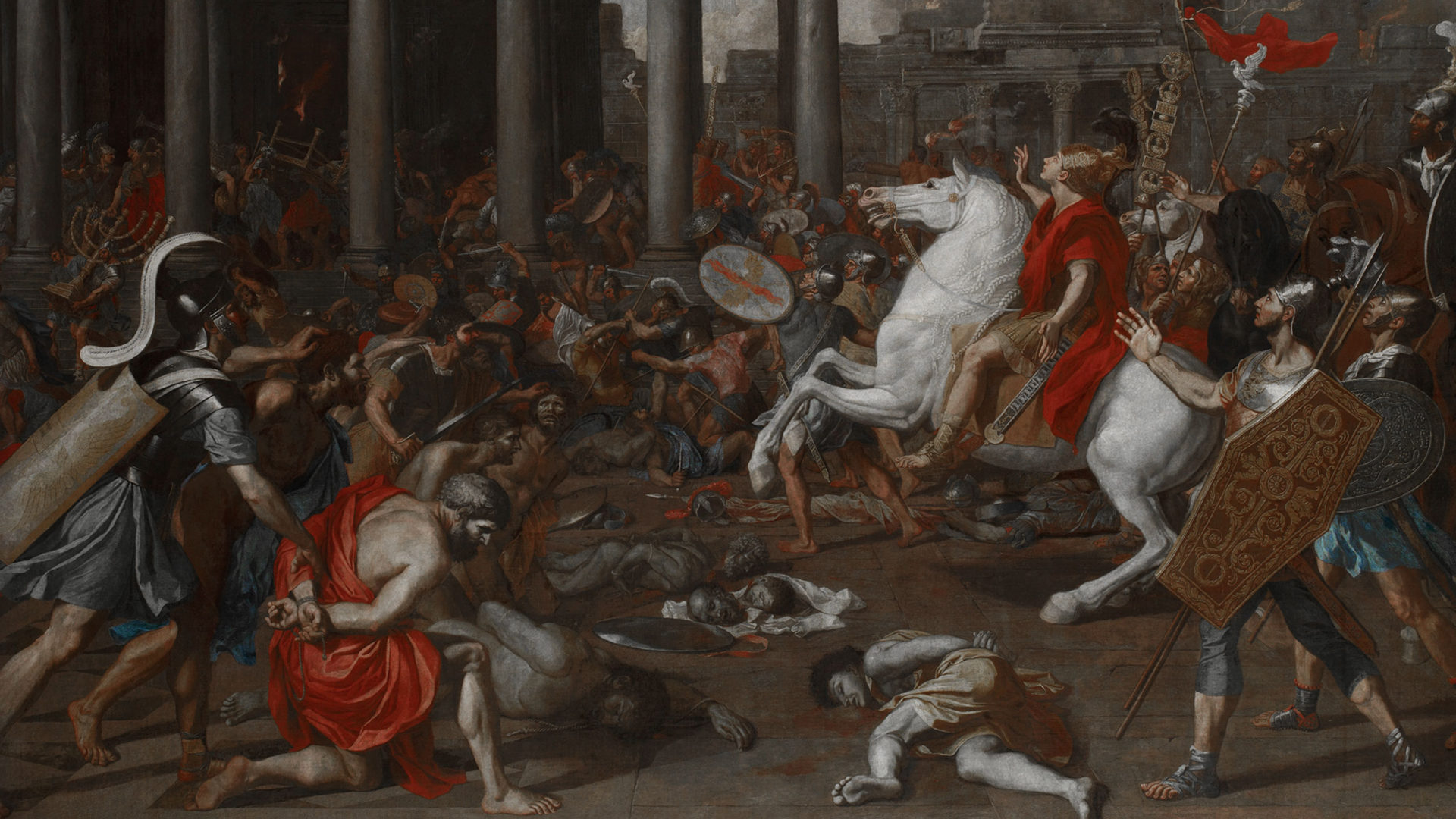
The Temple of Jerusalem was the central place of worship for the Jews. It’s the equivalent of the Saint Peter Basilica for Catholics, and the Mecca for the Muslims. Imagine the reaction when the Roman destroyed that place.
Matthew
Matthew also died in 74 AD in Ethiopia so that he couldn’t have written his Gospel in the 80s AD.
Jesus
Jesus of Nazareth wasn’t the first person to predict the destruction. Josephus recorded that a man named “Jesus, son of Ananias” also used the prophecy of Jeremiah 7 to predict its destruction62. If a normal Jewish man can do it, why not Jesus?
Moreover, the destruction was never mentioned as a past event or described as a fulfilled prophecy63.
And to add more, why did they have to pray for the Temple, if it was already destroyed?
1st Roman-Jewish war (66 AD)
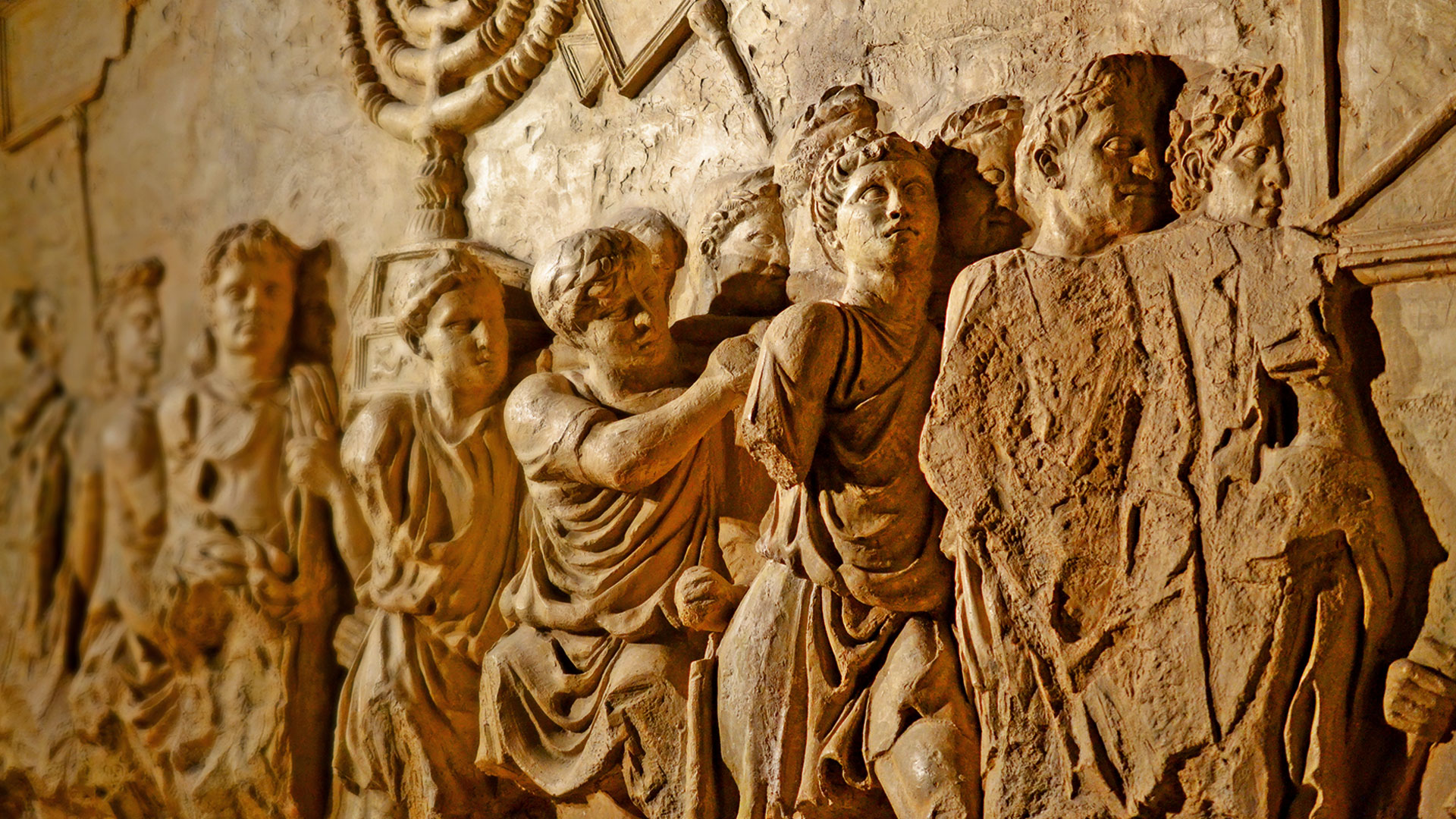
…
Death of Mark, Peter, Paul & James (62-68 AD)
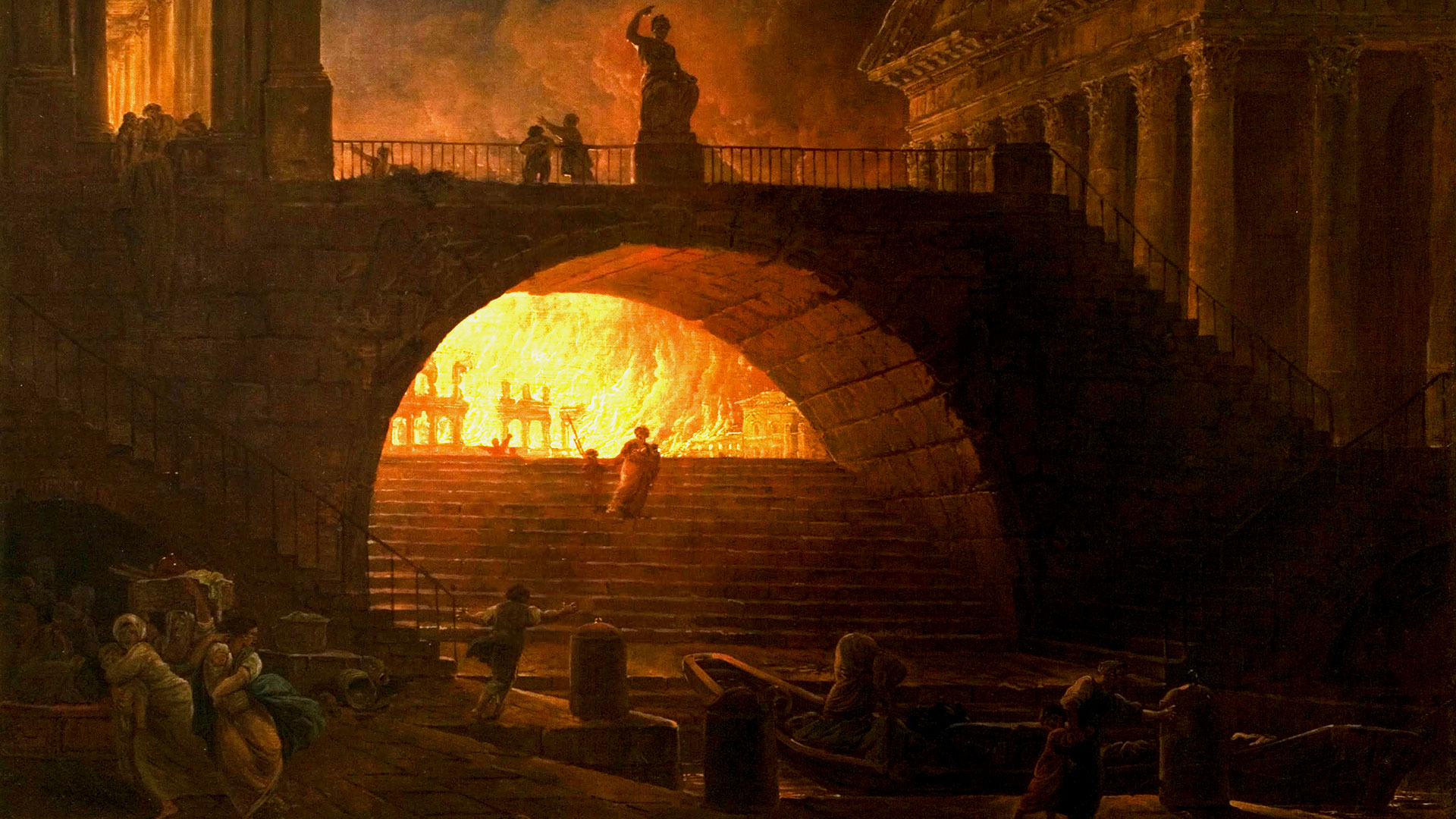
Acts of the Apostles described that Stephan died as a martyr 64. Yet, there’s nothing written about the death of 4 pillars of the early Church: Peter, Paul, Mark & James.
| Peter | Paul | Mark | James | |
| Year | 64-86 | 64-68 | 68 | 62 |
| Location | Rome | Rome | Alexandria | Jerusalem |
| Martyrdom | Crucified upside down | Beheaded | Dragged on the street with a rope on the neck | Stoned |
“The more I examined this evidence, the more I came to believe that the Gospels were written early enough in history to be taken seriously as eyewitness accounts.” 65
J. Warner Wallace
Recommended books
- John Wenham – “Redating Matthew, Mark & Luke: a fresh assault on the synoptic problem”
- John Nicolay and John Hay, “Abraham Lincoln: A History”
- Richard Bauckham, "Jesus and the Eyewitnesses: the Gospels as Eyewitness Testimony", (Grand Rapids, MI: William B. Eerdmans, 2006), 137
- 1 Peter 4:7, Mt 24:34, 26:64, 1 Cor 10:11, 15:51, 1 Thess 4:15-17
- Raymond E. Brown, “An Introduction To The New Testament”, (New York: Doubleday, 1997), 5
- Martin Hengel, “Acts and the History of the Earliest Christianity”, (Philadelphia: Fortress Press, 1985), 8
- Bart D. Ehrman, “Did Jesus exist? the historical argument for Jesus of Nazareth”, (New York: Harper One, 2012), 301
- Martin Hengel, “Acts and the History of the Earliest Christianity”, (Philadelphia: Fortress Press, 1985), 33
- G. N. Stanton, “Jesus of Nazareth in New Testament Preaching”, (Cambridge University Press, 1974), 4
- Craig L. Blomberg, “The historical reliability of the New Testament: Countering the Challenges to evangelical Christian beliefs”, (B&H Academic, 2016), 30-31
- Bart. D. Ehrman, “Did Jesus exist? the historical argument for Jesus of Nazareth, (New York: HarperOne, 2012), 82
- J. Warner Wallace, “Cold-Case Christianity: A homicide Detective Investigates the Claims of the Gospels”, (David C. Cook, 2013), 167
- Mary Healy, “The Gospel of Mark: Catholic Commentary on Sacred Scripture”, (Grand Rapids, MI: Baker Academic, 2008), 20
- Xenophon, “Apology”, 1.2, 10
- Brant Pitre, “The Case for Jesus: The Biblical and Historical Evidence for Christ”, (New York: IMAGE, 2016), 28
- Craig S. Keener, “Christobiography: Memory, History, and the Reliability of the Gospels”, (Grand Rapids: Eerdmans, 2019), 91
- James D.G. Dunn, “Christianity in the Making Volume 1: Jesus Remembered”, (Grand Rapids, MI: Eerdmans, 2003), 182
- G. N. Stanton, “Jesus of Nazareth in New Testament Preaching”, (Cambridge University Press, 1974), 4
- Bart. D. Ehrman, “Did Jesus exist? the historical argument for Jesus of Nazareth, (New York: HarperOne, 2012), 76
- Brant Pitre, “The Case for Jesus: the biblical and historical evidence for Christ”, (New York: IMAGE, 2016), 90
- John A. T. Robinson, “Redating the New Testament”, (London: SCM, 1976), 27
- Irenaeus, “Against Heresies”, 3.1.1
- James G. Crossley, “The Date of Mark’s Gospel: Insight from the Law in Earliest Christianity”, Journal for the Study of the New Testament Supplement Series 266 , (T. & T. Clark, 2004), 206
- Irenaeus, “Against Heresies”, 3.1.1
- Raymond E. Brown, “A Crucified Christ in Holy Week: Essays on the Four Gospel Passion Narratives”, (Collegeville, MN: The Liturgical Press, 1986), 33
- Raymond E. Brown, “A Crucified Christ in Holy Week: Essays on the Four Gospel Passion Narratives”, (Collegeville, MN: The Liturgical Press, 1986), 33
- Paul Barnett, “The Birth of Christianity: The First Twenty Years”, (Grand Rapids, MI: Eerdmans, 2005) 156
- Martin Hengel, “Studies in the Gospel of Mark”, (Eugene, OR: Wipf and Stock Publisher, 1985), 10
- Jerome, “De Viris Illustribus”, 7
- Eusebius, “History of the Church”, 2.22
- Acts 16:10-17, 20:5-15, 21:1-18, 27:1-28:16; 2 Tim 4:11
- Jn 21:18
- 2:22-36/13:26-41, 2:25-28/13:35, 3:1-10/14:8-10, 4:8/13:9, 5:15-16/19:11-12, 8:14-17/19:6, 8:18-24/13:6-11, 9:36-41/20:9-12, 10:25-26/14:11-15, 12:6-11/16:25-34
- 2 Cor, Galatians
- Acts 16:10-17, 20:5-15, 21:1-18, 27:1-28:16
- Irenaeus, “Against Heresies”,3.1.1
- Acts 25:1; 13-14 tells us about the change of procurators of Felix to Festus
- 1 Clement 5:5-7, Ignatius (Letter to the Ephesians 12:2), Polycarp (Letter to the Philippians 9:1-2), Dionysus of Corinth (Eusebius, “History of the Church”, 2.25.4), Irenaeus (Against Heresies, 3.1.1), Tertullian (Scorpiace 15:5-6) and the unreliable Acts of Paul
- John 21:19
- Raymond E. Brown (edited by Francis J. Moloney), “An Introduction To The Gospel Of John”, (Yale University Press, 2003), 5
- John Bergsma, “Jesus and the Dead Sea Scrolls: Revealing the Jewish Roots of Christianity”, (New York: IMAGE, 2019), 50
- Jn 1:38, 1:41, 1:42, 9:7, 19:13, 19:17, 20:16
- Jn 2:1
- Raymond E. Brown, “The Gospel and the Epistles of John: A concise commentary”, (Collegeville, MS: The Liturgical Press, 1988), 10
- Irenaeus, “Against Heresies”, 3.11.1
- Mt 26:26, Mk 14:22, Lk 22:19
- Ralph P. Martin, “Worship in the Early Church”, (Grand Rapids: Eerdmans, 1964), 120
- Raymond E. Brown and John P. Meier, “Antioch and Rome: New Testament Cradles of Catholic Christianity”, (New York: Paulist Press, 1982), 17
- Raymond E. Brown, “An Introduction To The New Testament”, (New York: DoubleDay, 1997), 7
- Jerome, “De Viris Illustribus”, 1
- Eusebius, “History of the Church”, 2.14
- Eusebius, “History of the Church”, 2.17
- Suetonius, “The Twelves Cesar”
- Jerome, “De Viris Illustribus”, chapter 8
- Eusebius, “History of the Church”, 2.16
- Jerome, “De Viris Illustribus”, chapter 8
- Linus took the charge of Pope in 67 AD (Eusebius, “History of the Church”, 3.2)
- 1 Clement 5:1-4, Ignatius (Letter to the Smyrneans 3:1-2), Dionysus of Corinth, Muratorian Canon, Tertullian (Scorpiace 15) and The Prescription Against Heresies 36, and less reliable sources: The Apocalypse of Peter, The Ascension of Isaiah, The Act of Peter, The Apocryphon of James
- E. P. Sanders & Margaret Davies, “Studying the Synoptic Gospels”, (Trinity Press International, 1989), 117
- Monarchian Prologue, Jerome “De Viris Illustribus”, 3
- Raymond E. Brown and John P. Meier, “Antioch and Rome: New Testament cradles of Catholic Christianity”, (New York: Paulist Press, 1982), 15
- Eusebius, “History of the Church”, 6.25
- Josephus, “Jewish War”, 6.301
- Mt 26:75, Mk 14:72, Lk 22:61, Jn 18:27, Acts 11:27-28
- Acts 7:60
- J. Warner Wallace, “Cold-Case Christianity:A Homicide Detective Investigates the Claims of the Gospels”, (David C Cook, 2013), 159